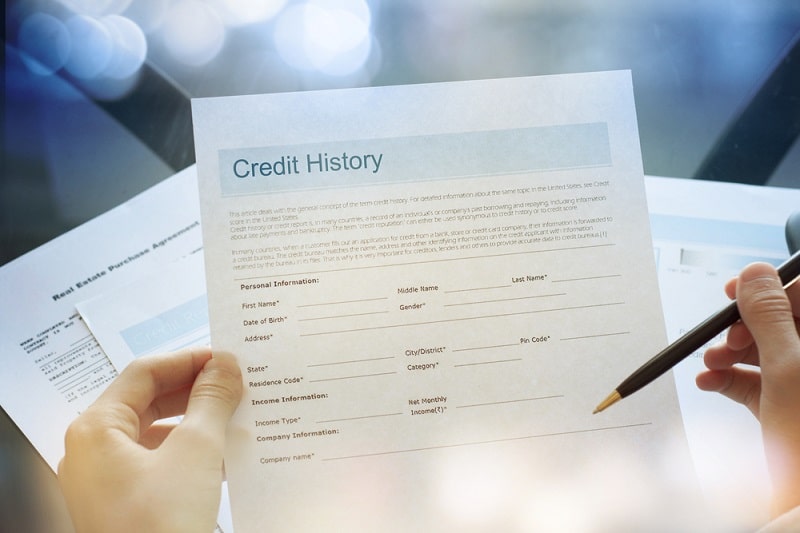How to Remove a Charge-Off from Your Credit Report
A charge-off on your credit report is more than just a bad mark—it’s a red flag to lenders. It tells them you didn’t pay back a debt, and the creditor gave up on collecting it. Even if you’ve turned things around since then, a charge-off can continue to hurt your credit score for years.

Lenders see charge-offs as high risk. That means you could get denied for new credit, pay higher interest rates, or miss out on things like mortgages, car loans, or credit card approvals.
However, you’re not stuck with it forever. There are specific steps you can take to remove a charge-off—or at least reduce its impact. Here's exactly what to do.
What Is a Charge-Off, and How Does It End Up on Your Credit Report?
A charge-off happens when a creditor gives up on collecting a past-due account and marks it as a loss. This usually happens after six months of missed payments. Even though the creditor writes it off as bad debt, you’re still legally responsible for paying it.
A charge-off stays on your credit report for seven years from the date the account first became delinquent. During that time, it can seriously lower your credit score.
It’s important to know that a charge-off is not the same as a collection account. In many cases, the original creditor charges off the debt and then sells it to a collection agency. That means the same debt can show up twice—once as a charge-off and again as a collection.
Creditors typically charge off debt because it’s required for accounting purposes. But that doesn’t mean they stop trying to collect. They might send the debt to collections, pursue legal action, or offer to settle for less than the full amount.
Can a Charge-Off Be Removed from Your Credit Report?
Yes, a charge-off can sometimes be removed from your credit report—but it depends on the situation. If there’s an error, such as a wrong balance or a debt that doesn’t belong to you, you can dispute it with the credit bureaus.
In other cases, you might be able to negotiate with the creditor. If you’ve already paid or settled the account, you can ask for a goodwill deletion. If you haven’t paid yet, you may be able to get the creditor to agree to remove the charge-off in exchange for payment. This is called a pay for delete agreement.
Keep in mind, if none of these options work, you might only be able to settle the account and ask the creditor to update the status. That won’t remove it, but it can still help improve your credit score over time.
Step-by-Step: How to Remove a Charge-Off From Your Credit Report
Removing a charge-off isn't automatic—it takes some action on your part. The right approach depends on whether the charge-off is accurate, unpaid, or already resolved. Start with the basics: confirm the details, then decide how to respond.
1. Check Your Credit Reports for Accuracy
Start by pulling your credit reports from Equifax, Experian, and TransUnion. You can get free copies at AnnualCreditReport.com.
Look for errors like:
- Wrong balance or payment history
- Incorrect dates (especially the date of first delinquency)
- Accounts that don’t belong to you
- Duplicate listings (charge-off and collection for the same debt)
Even small mistakes can be grounds for removal.
2. Dispute Any Inaccurate Information
If you spot an error, file a dispute with the credit bureau reporting it. You can do this online or by mail. Include a copy of your credit report with the error highlighted, a short explanation, and any documents that support your claim.
The credit bureau has 30 days to investigate and respond. If the creditor can’t verify the information, the charge-off must be removed.
Common reasons to dispute:
- The account isn’t yours
- The amount is wrong
- The account was paid, but still shows as unpaid
- The delinquency date is inaccurate
3. Request a Goodwill Deletion (If You’ve Paid or Settled)
If you’ve already paid the charge-off or settled it, you can ask the creditor to remove it as a favor. This is called a goodwill deletion.
Write a short, respectful letter explaining why you fell behind and how you’ve since corrected the issue. Mention how long you’ve been a customer (if applicable), and how removing the charge-off would help you move forward financially.
Make sure to:
- Be polite and concise
- Take full responsibility for the missed payments
- Highlight any positive payment history since then
There’s no guarantee it’ll work, but it’s worth trying—especially if the debt has been paid.
4. Negotiate Pay for Delete (Before Paying)
If the charge-off is still unpaid, you can try to negotiate a pay for delete. This involves offering to pay the debt—either in full or for less—in exchange for the creditor agreeing to remove the account from your credit report.
To do this:
- Contact the creditor or collection agency directly
- Offer a specific payment amount and request that they delete the account from all credit reports
- Get the agreement in writing before sending any payment
Not every creditor will agree, but some may be willing—especially if the debt is old or they’ve had trouble collecting.
5. Settle the Debt and Ask for ‘Paid as Agreed’ or ‘Settled’ Update
If the creditor won’t delete the charge-off, your next best option is to settle the debt and request a status update. Ask them to report it as “paid as agreed” or “settled in full.”
While the account won’t disappear from your credit report, a paid status looks much better than unpaid. Over time, the impact on your credit score will fade, especially if you’re actively rebuilding credit with other accounts in good standing.
What Happens If You Can’t Remove the Charge-Off?
If the charge-off is accurate and the creditor refuses to delete it, the account will stay on your credit report for seven years from the date it first became delinquent. That’s true whether the debt is paid or unpaid.
The impact on your credit score is strongest in the first few years. Over time, the effect lessens—especially if you build positive credit history with on-time payments and low balances on other accounts.
If removal isn’t an option, focus on rebuilding your credit:
- Keep credit card balances low
- Make all payments on time
- Consider a secured credit card or credit builder loan
- Don’t apply for too much new credit at once
Consistency matters more than quick fixes. You can still raise your score even with a charge-off on file.
Should You Pay a Charge-Off?
Paying a charge-off can help in certain situations—especially if you’re applying for a mortgage or other major loan. Some lenders require old debts to be resolved before approving your application.
But before you pay, it’s worth trying to negotiate. You may be able to arrange a pay-for-delete or settle for less than the full amount. Just be sure to get any agreement in writing.
One thing to watch out for: making a payment could restart the statute of limitations on the debt. That means the creditor or collector could have more time to sue you. If you’re unsure, check your state laws or speak with a credit attorney before paying.
What If the Charge-Off Is From a Closed Bank Account or Auto Loan?
Charge-offs tied to specific account types may come with added complications.
For closed bank accounts—especially those involving overdrafts—you may also be listed in ChexSystems or Early Warning Services. That can make it harder to open a new checking account, even if the charge-off is resolved. Request your report from those databases and dispute any errors there too.
For auto loans, if the vehicle was repossessed, you could also owe a deficiency balance. The lender may charge off that balance and send it to collections. In those cases, you might have both a charge-off and a collection account tied to the same loan. Be sure to confirm the accuracy of both and address each one.
Professional Help: When to Hire a Credit Repair Company
If you’re overwhelmed or not getting results on your own, professional credit repair companies may be able to help. They can handle disputes, follow up with creditors, and check for legal violations under the Fair Credit Reporting Act.
That said, not all companies are honest. Avoid any service that:
- Promises a quick fix or guaranteed results
- Asks for payment upfront
- Tells you to dispute everything, even if it’s accurate
If you want to tackle it yourself, you can absolutely do that. Credit repair is time-consuming, but it’s not impossible. You just need patience, persistence, and a clear plan.
Final Thoughts
A charge-off can drag down your credit score, but you’re not powerless. Whether you dispute an error, send a goodwill letter, negotiate a pay-for-delete, or settle the account, there are steps you can take to move forward.
Start with your credit reports. Check the details, know your options, and take action one step at a time.
You don’t need perfect credit to make progress—you just need a plan and consistency.



